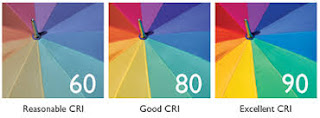Digital Addressable Lighting Interface
What is DALI?
DALI as an acronym stands for Digital Addressable Lighting Interface. DALI as a concept stands for an intelligent lighting management system that provides increased energy savings,easier installation and maintenance and maximum control and retrofit flexibility.It is an entirely open standard.
DALI is not a single product. It is an industry protocol that allows components from different manufacturers( ballasts, controls systems,sensors,controllers,switches etc) to be mixed and matches seamlessly into complete systems. With DALI, design and user flexibility is dramatically improved over conventional,proprietary systems.
Traditional Lighting controls utilized analog interfaces or proprietary digital control methods.
image courtesy Dalibydesign
DALI advantages to Lighting designers
- Simple wiring of the control wire
- Control of individual Lights
- Flexible Group control
- Software control allows easy configuration and modification
- Simple interface with Building Management Systems(BMS)
DALI advantages to Facility Managers
- Increased Space Felxibility
- Simple modification
- Lower maintenance costs
- Energy Savings
DALI advantages to Building Occupants
- Customized Lighting Preferences
- More comfortable lighting
- Individual controls
- Easy modification
Features available when installing DALI
ballasts are:
- Simple wiring of control
lines (no group formation, no polarity).
- Control of individual
ballasts or groups is possible.
- A simultaneous control of
all ballasts is possible at any time.
- Ballasts status messages
(lamp fault ....).
- Automatic search of
ballasts.
- Automatic and simultaneous
dimming of all ballasts when selecting a scene.
- Logarithmic dimming
behavior – matching the eye’s sensitivity
- System with assigned
intelligence (every unit contains amongst other things the following
data: individual address, group assignment, lighting scene values,
fading time ....).
- Operational tolerances of
lamps can be stored as default values (for example for the purpose of
energy savings maximum values can be set)
- Fading: adjustment of
dimming speed
- Options for emergency
lighting can be chosen (selection of specific ballasts, dimming level)
- No need to switch on/off
the external relay for the mains voltage (this is done by internal
electronic components)
DALI has been defined for:
- a maximum of 64 single
ballasts (individual addresses)
- a maximum of 16 groups
(group addresses)
- a maximum of 16 scenes
(scene light values)
Each ballast stores its own set of
parameters:
- Individual addresses
- Group assignments
- Light scene values
- Fading times
- Emergency lighting level
(System Failure Level)
- Power On Level
Information on DALI technology and a
list of existing ballast manufacturers can be found at AG DALI association’s
website (http://www.dali-ag.org).




Comments
Post a Comment